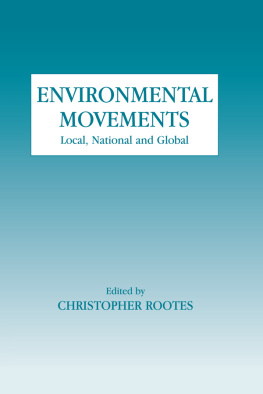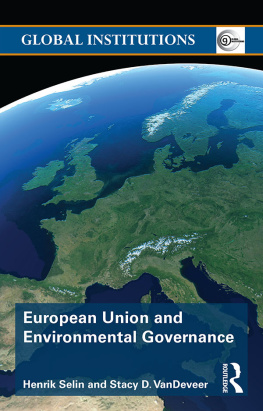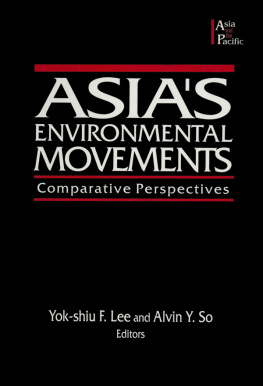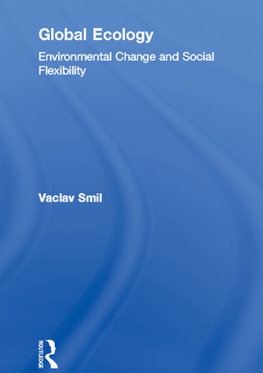Environmental Movements
Local, National and Global
Of Related Interest
A GREEN DIMENSION FOR THE EUROPEAN COMMUNITY
Political Issues and Processes
edited by David Judge
SUSTAINABLE DEVELOPMENT IN WESTERN EUROPE
Coming to Terms with Agenda 21
edited by Tim ORiordan and Heather Voisey
RIO: UNRAVELLING THE CONSEQUENCES
edited by Caroline Thomas
NETWORKS FOR WATER POLICY
A Comparative Perspective
edited by H. Bressers, L.J. OToole, Jr. and J. Richardson
ECOLOGY AND DEMOCRACY
edited by Freya Mathews
DILEMMAS OF TRANSITION
The Environment, Democracy and Economic Reform in Europe
edited by Susan Baker and Petr Jehlicka
First published 1999 by Frank Cass Publishers.
Published 2014 by Routledge
2 Park Square, Milton Park, Abingdon, Oxon OX14 4RN
711 Third Avenue, New York, NY 10017 USA
Routledge is an imprint of the Taylor & Francis Group, an informa business
Copyright 1999 Taylor & Francis.
British Library Cataloguing in Publication Data
Environmental movements : local, national and global
1. Environmentalism
I. Rootes, Chris, 1948
333.72
ISBN-13: 978-0-714-65008-1 (cloth)
ISBN-13: 978-0-714-68066-8 (paper)
ISBN-13: 978-1-315-87781-5 (eISBN)
Library of Congress Cataloging in Publication Data
Environmental movements : local, national and global I edited by
Christopher Rootes.
p. cm.
A special issue of the journal Environmental Politics, vol. 8,
no. 1. Spring 1999.
Includes bibliographical references and index.
ISBN 0-7146-5008-0 (cloth). ISBN 0-7146-8066-4 (pbk.)
l. Environmentalism. I. Rootes, Chris, 1948.
II. Environmental politics. Vol. 8, no. 1, Spring 1999.
GE195.E585 1999
363.705dc21
99-21228
CIP
This group of studies first appeared in a Special Issue: Environmental Movements: Local, National and Global of Environmental Politics (ISSN 0964-4016) 8/1 Spring 1999 published by Frank Cass.
All rights reserved. No part of this publication may be reproduced, stored in or introduced into a retrieval system or transmitted, in any form or by any means, electronic, mechanical, photocopying, recording or otherwise without the prior written permission of the publisher of this book.
Contents
Christopher Rootes
Mario Diani and Paolo R. Donati
Karl-Werner Brand
Dieter Rucht and Jochen Roose
Derek Wall
JoAnn Carmin
David Schlosberg
Manuel Jimnez
Maria Kousis
Hein-Anton van der Heijden
Jeff Haynes
Zoe Young
Marc Williams and Lucy Ford
Christopher Rootes
CHRISTOPHER ROOTES
Of all the new social movements which emerged from the student movements of the late 1960s, it is environmental movements which have had most enduring influence on politics and which have undergone the most wide-ranging institutionalisation in terms both of the professionalisation of their activities and of the regularisation of their access to policy-makers. Not least as a result of pressure from environmental movements, environment ministries are now a normal feature of western governments. Although the emergence of green parties is only the tip of the iceberg of the greening of the politics of industrialised societies, Green Party members currently hold the environment portfolio in the governments of three of the four largest western European states. Greens are established players in the political arena of most western European states, by turns competed with and courted by larger parties.
Green Parties have not generally grown simply or directly from environmental movements [Rootes, 1997c ] green parties are widely regarded as part of a broader green movement, and the fact that greens have entered government in an increasing number of states owes more to the perceived strength and popularity of environmental movements than it does to the generally marginal electoral performances of green parties themselves.
Despite recurrent sensationalist mass media reports of the decline or even death of the environmental movement, there is abundant evidence of its enduring vitality. Younger people are now more likely to be members or paying supporters of environmental movement organisations (EMOs) than of political parties. As one generation of EMOs becomes established and institutionalised, new, more formally organised networks of environmental activists have emerged [Rootes, 1997b, 1999]. Eco-warriors have become folk heroes, not only with young people, but even with sections of a generally conservative press [Paterson, 1997]. Mobilisations against new infrastructure developments such as roads, airports, high speed railways and waste treatment facilities have so raised the costs of such projects that they have forced re-evaluation of policy. At a global level, NGOs which are part of or linked to environmental movements enjoy unprecedented status as interlocutors of the representatives of states as they attempt to grapple with the formation and implementation of policies and institutions to deal with global environmental problems.
If environmental movements have been relatively neglected in the scholarly literature by comparison with green parties, it is partly because of the sheer messiness of the phenomena so labelled. Whereas parties and individual organisations are relatively easily delimited, environmental movement? is a rather vague term and one often left deliberately vague in order to be inclusive.
The approach adopted to environmental movements in this volume is an inclusive one. Thus environmental movements are conceived as broad networks of people and organisations engaged in collective action in the pursuit of environmental benefits [Rootes, 1997c; cf. Diani, 1992]. Environmental movements are understood to be very diverse and complex, their organisational forms ranging from the highly organised and formally institutionalised to the radically informal, the spatial scope of their activities ranging from the local to the almost global, the nature of their concerns ranging from single issues to the full panoply of global environmental concerns. Such an inclusive conception is consistent with the usage of the term amongst environmental activists themselves and enables us to consider the linkages between the several levels and forms of what activists call the environmental movement. Parties, particularly green parties, are not in principle excluded, but the emphasis here is on the groups and organisations which generally operate through less clearly and publicly rule-governed channels and which do not seek formal political office.
The cases treated here cannot hope to be representative of environmental movements in all their diversity, but they do include countries whose environmental movements have excited particular interest and cases which well illustrate some of the most interesting issues in the development of environmental movements:
- institutionalisation and the dilemmas that attend it;
- the relationship between local environmental struggles and national and (sometimes) transnational EMOs;
- the prospects for the development of a global environmental movement.
Institutionalisation and Its Discontents
Diani and Donati lay out a framework for the analysis of organisational changes in EMOs. It is an oversimplification to say that the environmental movement has undergone a change from being a mass participatory social movement to a series of institutionalised interest groups. Like other social movement organisations, EMOs are faced with choices between professional and mass participatory forms of organisation and between conventional and unconventional forms of action. These choices are not mutually exclusive; the mix of forms and tactics varies both over time and from place to place. Whilst there is evidence that some hitherto participatory and unconventional organisations have become more professionalised and are more ready to employ conventional tactics, others which were hitherto entirely conventional now also employ less conventional tactics. Nevertheless, as society and politics are transformed by the processes we commonly refer to as globalisation or postmodernisation, so we should expect a transformation in the character of environmental movements. Central to this is the role of mass media. More professionalised EMOs have quickly adapted to a mass mediated age but the question that now arises is whether such adaptations ultimately weaken the capacities of EMOs to effect the mass mobilisations from which the environmental movements power initially derived and upon which it may ultimately depend.












